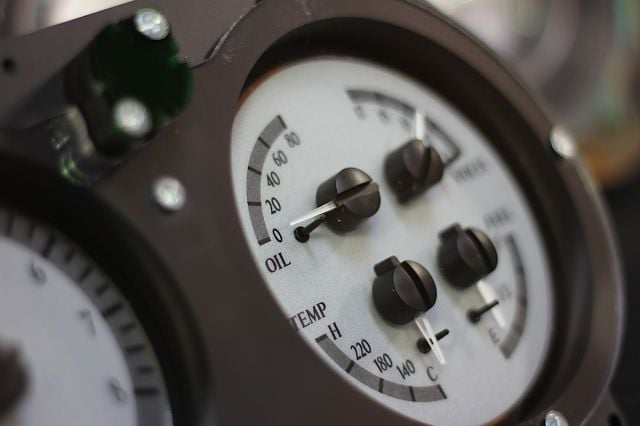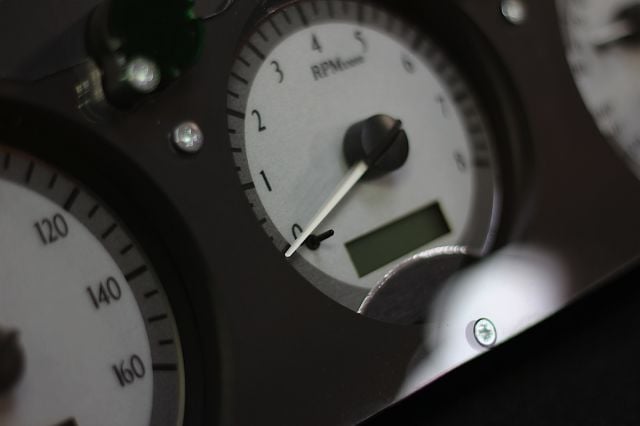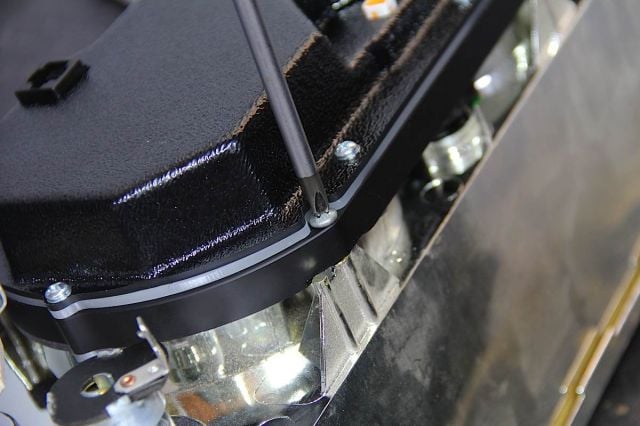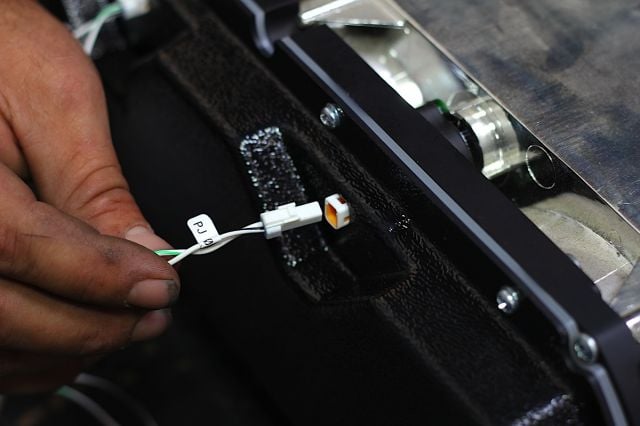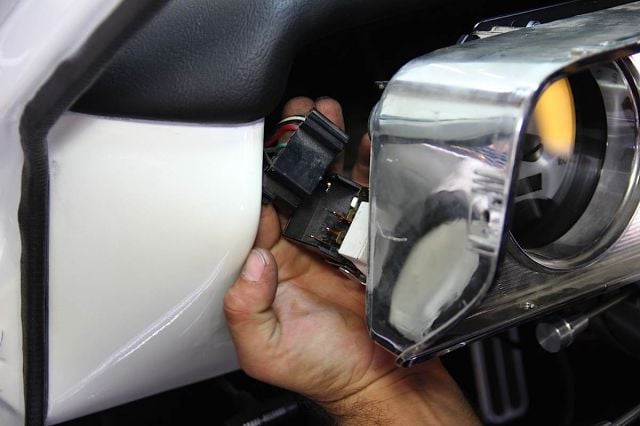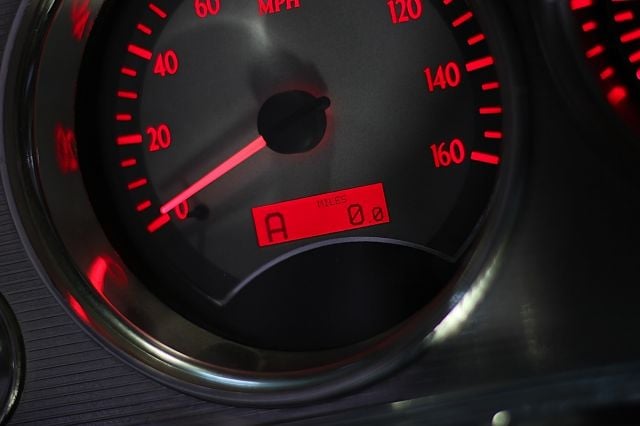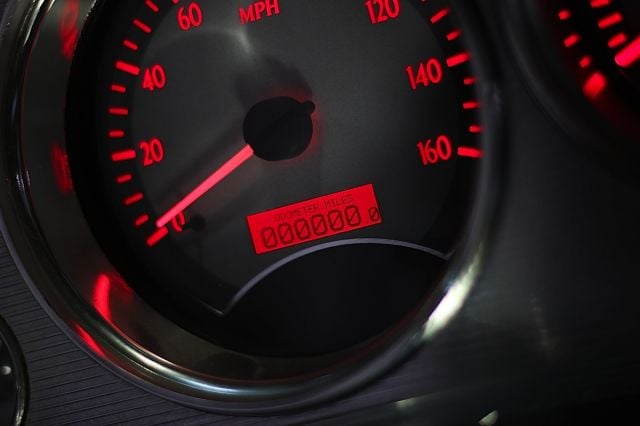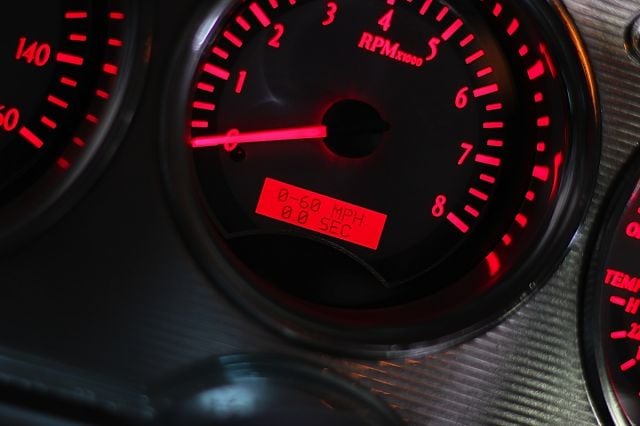
What We Did: Installed a complete Dakota Digital VHX System in a ’64 Chevelle
Bottom Line: Update the look and functionality of your factory gauge cluster
Cost (Approx.): $795
This isn’t just another ordinary instrument cluster with basic rev functions and mile per hour readouts. It’s much more advanced. Dakota Digital has found a nice niche to apply all of its latest technology into something we can put to good use in our musclecars and street machines.
According to Dakota Digital, “It’s not so much to offer a product comparable to the factory equipment, but rather to complement the modern-themed vehicle builds with an equally modern and expandable product, which in many cases becomes the focal point of the interior. The goal was simple. Dakota Digital’s Vehicle Hybrid Instrument System (VHX) represents the latest electronic dashboard with the ultimate in driver information. No doubt, there’s a surplus of options at your fingertips to keep an eye on engine stats. But what if you could get most of what you needed in one easy-to-read display with an elegant, easy on your eyes layout?
Inside & Out /// Instruments For Any Season
 The Dakota Digital VHX system allows you to keep an eye on basic engine parameters such as rpm and speed but also provides you with a deluge of other, added functions to toy with.
The Dakota Digital VHX system allows you to keep an eye on basic engine parameters such as rpm and speed but also provides you with a deluge of other, added functions to toy with.
Things like 0-60 and quarter-mile times with speed, high speed and rpm recall, and even a multitude of built-in indicators, including left/right turn signals, high beam and cruise control with gear position displays. Of course, these functions are all available with two, attractive LCD displays.
Dakota Digital’s VHX system can be as elaborate or simple as you like; offering an incredible amount of options, many of which have never been available in one complete dash package until now. Since it’s expandable, it means you can continue adding functions with the Dakota Digital line of Bus Interface Modules (BIM). The BIMs function as expansion modules for both the VHX and VFD series of gauges.
The BIM allow for an additional 16 specialty gauges; further intensifying the driving experience. The BIM’s include an Electric Fan Controller, Temperature, Voltage Current, Wideband Air/Fuel and Compass with Outside Temperature Module and more. We’ve previously dabbled with the BIMs once before, which included the OBDII interface on Project Swinger, here. For a complete list of BIMs, be sure to check out the Dakota Digital line up, here.
Dakota Digital couldn’t have made our decision to add their instrument package to the ’64 Chevelle, Project BluePrint any easier. Since we were still relying on the factory gauge cluster from 1964, years of use and a spiderweb of hacked wires from previous owners, it was blatantly obvious it was in need of an upgrade.
Dakota Digital Sending Units
Dakota Digital makes sure to include all of the necessary parts and components for the install; even adding in the sending units for the speedometer, tachometer, water temperature, oil pressure, voltmeter and fuel level. Before we could dig into the factory bezel, we made sure to first install each of the sensors. While most required a simple plug and play installation, the speedometer cable required a bit more finesse to locate on the transmission. What’s more, Dakota also has optional items you may consider to maximize the display, which you can view, here.
What’s more, Dakota Digital ups the ante by making their line of VHX gauges complete. This means less trips to the parts store and more time behind the wheel; enjoying the new upgrade. With a simple search through the easy-to-navigate Dakota Digital website, we were able to pinpoint a VHX system for ’64-65 Chevelles, Malibus and even El Caminos.
These kits (PN, VHX-64C-CVL) come with everything you’d need for a complete install, including the VHX display, control box, universal sender pack, CAT5 cable (connects display to control box), blinker harnesses and necessary hardware.
To get things started, we rolled our BluePrint Chevelle into the Power Automedia garage for the VHX system upgrade. We began by installing the supplied sending units, then loosened the steering column and removed the factory bezel. From there, we built the Dakota Digital dash on the bench, which we eventually installed into the Chevelle.
In a couple hours using basic handtools with a little wiring know-how, we had an affordable do-it-all system with the confidence Dakota Digital is known for. Follow along to see how we completed the install.
Visual Real Estate /// Out With The Old, In With The New
As we’ve previously mentioned, our factory bezel and gauge cluster was still a functioning unit. However, its lack-luster appearance didn’t fit the updated theme of this modern-powered Chevelle. Plus, with our LS BluePrint engine powerplant, staying up to date with how the engine is operating remained a critical requirement. The new Dakota Digital VHX will illustrate all of our essential parameters in two, easy-to-read LCD screens with the ability to scroll through a variety of functions.
 Our resident tech-guru, Dean Jigamian, took the helm and began the process by disconnecting the battery and then removing the factory dash and gauges. To help with the removal, Jigamian first loosned and removed the steering column strap. This allows the steering column to drop out of the way; leaving ample room to maneuver the old dash once the factory hardware was removed. From there, it was only a matter of removing the Phillips head screws from the outer perimeters of the dash.
Our resident tech-guru, Dean Jigamian, took the helm and began the process by disconnecting the battery and then removing the factory dash and gauges. To help with the removal, Jigamian first loosned and removed the steering column strap. This allows the steering column to drop out of the way; leaving ample room to maneuver the old dash once the factory hardware was removed. From there, it was only a matter of removing the Phillips head screws from the outer perimeters of the dash.
It’s important to note that the actual cluster will still be connected by the factory wire loom. This loom includes the power, grounds and illumination bulb connections. Jigamian was careful to detach all of the connections before the cluster was removed.
Removing the brittle factory dash will require some patience. Working slowly will allow the dash to separate from the cluster. 
The Pregame /// Dakota Digital VHX Cluster Setup
Of course, part of what makes the Dakota Digital VHX cluster so desirable are its looks. The VHX cluster is beautifully manufactured with easy-to-read numbers and brightly lit; resembling a high-quality time piece. To protect such an investment, Dakota has made sure the new cluster remains a direct install into the factory bezel; making this part of the install a breeze.
 The cluster features three display layouts (speed, rpm, engine vitals), two with twin LCD message centers and one layout to illustrate the oil pressure, water temperature, voltage and fuel level.
The cluster features three display layouts (speed, rpm, engine vitals), two with twin LCD message centers and one layout to illustrate the oil pressure, water temperature, voltage and fuel level.
With some patience and elbow grease, we had the VHX cluster into the factory bezel in no time. To assure a quality fit and finish, we went ahead and cleaned up the factory bezel with some soap and water and then began the process of laying in the new cluster.
First, we removed the protective tape from the clear lens and placed the VHX system into the bezel. In our case, it was a tight fit. It’s important to note, the VHX system should align snugly with the bezel sitting flush against the lens. From there, Jigamian secured the VHX system to the bezel using the four, 8-18 x 3/4-inch screws.
Note: Only hand tighten the Phillips head screws until snug. The plastic bezel can become brittle with age and will crack if too much torque is applied to the hardware.
Part of what makes the Dakota Digital VHX system unparalleled are the integration of CAT5 and blinker harnesses to the system. Depending on application, the VHX system allows for the option to utilize the existing turn signal arrows or use the turn signals within the new faceplate. In our case, we chose to use the factory set of turn signals. To do this, we first located the left and right connectors on the back of the VHX system. Then, carefully plugged in each connector, which are accurately labeled.
The CAT5 cable acts as the brains of the operation, providing the signal from the control box (included) to the VHX display panel. Not to worry, we’ll provide you with the location of the control box as well as basic setup so keep reading to find out.

We had the old bezel and cluster removed from the Chevelle and installed the new VHX cluster in a short period of time. Now, we could focus on getting the bezel back into the Chevelle.
The Brains /// Locating And Wiring In The Dakota Digital Control Box
So, how does the VHX system operate and what makes it so unique? Well, much of that is thanks in part to the integrated control box, which is supplied with the purchase of a VHX gauge system. In short, the control box allows for the simple wiring of all the basic components to once centralized location. Each function on the control box is clearly visible and requires a flat-blade screwdriver to complete the circuit.
 Before we could get the new cluster back into the Chevelle, we first had to find a location to mount the box. The detailed instructions from Dakota Digital revealed the control box mounting can be secured by double-sided tape, hook and loop fasteners or screws in the two tabs on the case. In our case, we decided to mount the box within the dash on the firewall. This would prevent running wires long distance or under carpet.
Before we could get the new cluster back into the Chevelle, we first had to find a location to mount the box. The detailed instructions from Dakota Digital revealed the control box mounting can be secured by double-sided tape, hook and loop fasteners or screws in the two tabs on the case. In our case, we decided to mount the box within the dash on the firewall. This would prevent running wires long distance or under carpet.
Better yet, it would never get kicked by a passenger and would be kept away from dirt or debris. Once mounted, we began the process of wiring in all of the necessary functions. For example, from our sending units, we connected the oil pressure and speed sensors, and connected the fuel gauge wires and power. At this point, we also plugged in the CAT5 cable from the back of the display into the box. After buttoning up the control box, we could begin the process of installing the bezel.

The wiring on the control box is straigtforward. Depending on applicaiton, not every terminal will be used.
Install /// Applying The New Bling
Unfortunately, as with most electrical updates, narrowing down live and unneeded wires can be a bit daunting. To help, Jigamian began by disconnecting and removing all of the interior dash light bulbs. Since the new VHX system is powered with its own illumination panels, the old bulbs were not necessary. Next, the entire wire loom was combed through and straightened to further simply the process.
 With the wires organized and more easily managed, Jigamian could begin the tedious process of reinstalling the factory bezel, albeit with the new VHX facelift.
With the wires organized and more easily managed, Jigamian could begin the tedious process of reinstalling the factory bezel, albeit with the new VHX facelift.
Using some patience, Jigamian was able to carefully insert the factory bezel back into the Chevelle. However, before solidifying the deal, we made sure to reconnect all of the factory connections, including the headlight switch, radio and ignition.
Once there, we were able to lock it into place with the same factory hardware we previously removed using a Phillips screwdriver. Once in for good, we were also able to secure the steering column back into place. We made a quick visual check to assure everything was in line and moved on to powering on the system and setting up the functions.
Aside from connecting the factory harnesses to the back of the new cluster, installing the bezel into the Chevelle took less than ten minutes.
Seal The Deal /// LCD Message Centers
With the Dakota Digital VHX system fitting squarely in its new home, we could begin the process of running through some of its common functions. While the actual operation of the unique functions and detailed, for now, we’ll go over some of the basic VHX system displays. Be sure to consult with the detailed instructions, which come available with the VHX system. It’s important to note and follow along with the setup instructions to ensure the system is calibrated and connected properly.
What sets the VHX system apart from traditional analog gauges are its exclusive gauge sweeps and of course, the two message centers that display. Between the two message centers, displays can feature a wide variety of basic information like an ODOMETER, A and B MILES, GEAR (shift indicator), SERVICE (when enabled), ENGINE (warning indicator), CLOCK, HOURS, and RPM (digital tach). As well as auxiliary information such as, HI SPEED, 0-60 (0-60 mph time in seconds), 1/4 MI SPD, 1/4 MI TIME, HIGH RPM (high rpm recall).
Though we weren’t able to test the new VHX gauge clusters in a real-world setting, bench-testing performed in the Chevelle in the Power Automedia garage did get the crew excited about getting behind the wheel. In the meantime, we did calibrate the rpm tachometer and double-checked to ensure the fuel level, water temperature, oil pressure and voltage were accurate. We’re looking forward to planting our right foot, putting some hard miles on the Chevelle and testing the VHX system to record some 0-60 and quarter-mile blasts.
A variety of functions can be displayed at any one time between the two LCD screens.
What’s It All Mean
All said, this is a great system that’s completely digital with endless possibilities. The install wasn’t difficult, requiring a few hours with basic handtools and a little wiring know-how. If you’re looking for an affordable do-it-all system while offering a multitude of functions that Dakota Digital is known for, then this is the system for you.








